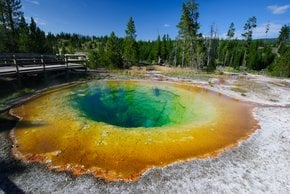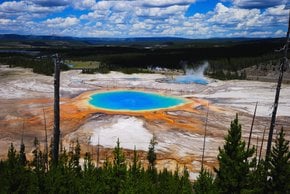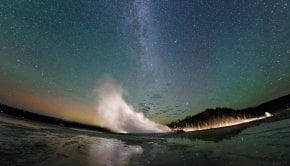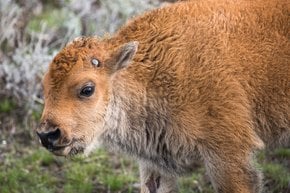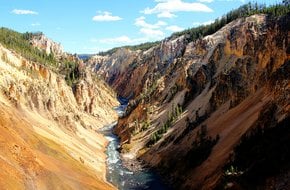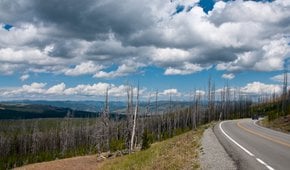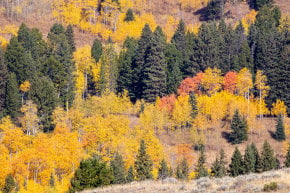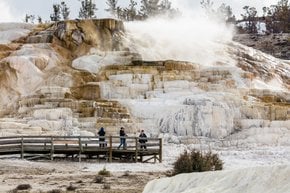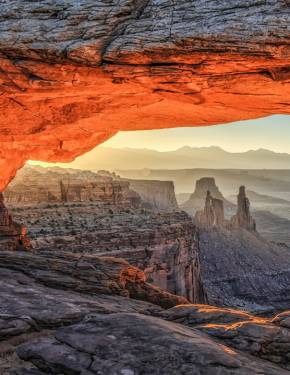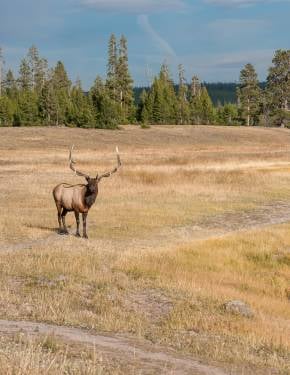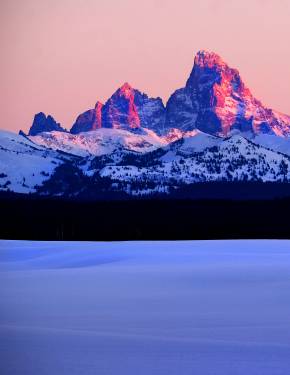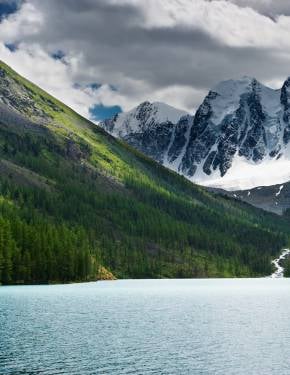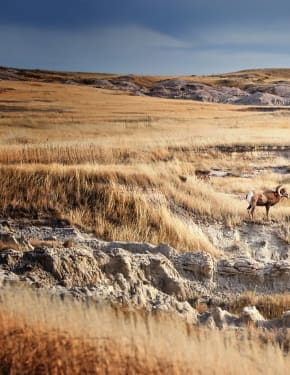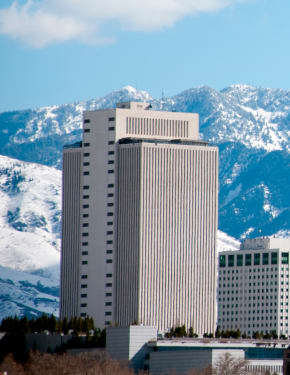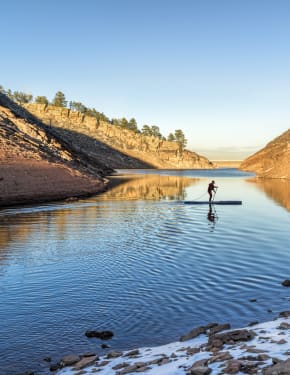Annual Elk Migration in Yellowstone National Park 2025
The annual elk migration takes them to warmer and safer places
Best time: late October–early December | April–May
Elk are the most abundant large mammals in Yellowstone and play a crucial role in the Greater Yellowstone Ecosystem. As cold weather arrives, thousands of elk migrate to the lowlands in search of softer snow and food. This migration is a key part of their natural cycle and is one of the park's most exciting and closely studied phenomena.
Elk or Moose?
European American settlers called the animal "elk," a term that in Europe refers to what is known in North America as a moose, leading to confusion for European visitors. The Shawnee word “wapiti,” meaning “white deer” or “white-rumped deer,” is another name for elk. Some experts consider North American elk to be the same species as the red deer of Europe (Cervus elaphus), though this remains a topic of taxonomic debate. Currently, most scientists classify North American elk as Cervus canadensis.
Seasons of Elk Migration
The annual winter migration for elk begins in late October and continues through December as they leave Yellowstone National Park and head to various refuges. During winter, elk are more vulnerable to predators, so they continuously move toward safer winter shelters. Each spring, thousands of elk from 6-8 populations migrate back to high-elevation summer ranges closer to the core of Yellowstone National Park. By April and May, they return to these higher elevations and park borders. In summer, Yellowstone hosts between 10,000 and 20,000 elk in six to seven herds. In winter, their numbers drop to fewer than 4,000 as they migrate to lower elevations.
Why Elk Migrate?
In the harsh winter conditions of higher elevations, elk in Yellowstone National Park migrate to lower altitudes outside the park. This migration helps them find better food and shelter, increasing their chances of survival. By moving to these more hospitable areas, elk reduce their risk of death and avoid becoming easy prey for predators during the winter months.
Where to See Elk in Yellowstone National Park?
Elk can be observed in Cascade Meadows, Madison Canyon, and Lamar Valley in the summer. During autumn, or the rut (mating season), they gather in large numbers across the northern range, with significant activity centered around Mammoth Hot Springs and the Madison River. You might see them congregating on the lawns at Officer’s Row, alongside the Gardner River, or just outside the park near the historic Roosevelt Arch. Additionally, elk can be spotted along the Madison River between Madison Junction and West Yellowstone.
In winter, elk migrate north to the northern range and around Gardiner, Montana, as well as south to the Jackson Hole Elk Refuge in Jackson, Wyoming. Outside Yellowstone, the National Elk Refuge in Jackson Hole offers excellent viewing opportunities. Exploring these areas can be done through guided tours or by hiring reputable tour operators. Visitors need to adhere to park regulations and respect the animals' space, observing them from a safe distance. Each spring in the Greater Yellowstone Ecosystem, thousands of elk migrate from their distant winter ranges in Wyoming, Montana, and Idaho back to high-elevation summer ranges closer to the core of Yellowstone National Park.
Elk Description
Bull elk are popular in Yellowstone for their large antlers. They start growing them at about one year old each spring. Antlers shed in March or April and regrow covered in fuzzy “velvet,” which is scraped off by August. Young bulls take about 90 days to grow their antlers, while mature bulls need around 140 days. Mature antlers can reach 55–60 inches and weigh about 30 pounds. Bulls keep their antlers through winter, which helps them reduce injuries and boosts their social status. Male elk weigh about 700 pounds and stand five feet tall, while females weigh around 500 pounds and are shorter. Newborn calves weigh about 30 pounds. Elk eat grass, herbs, shrubs, aspen bark, conifer needles, burned bark, and aquatic plants.
Mating Season
During the mating season, from early September to mid-October, elk gather in mixed herds. Bulls bugle to attract females and challenge other bulls. They may fight by crashing antlers together, but serious injuries are rare. The weaker bull eventually backs down. Bulls keep their antlers through winter, using them to settle disputes. Antlered bulls fight less often and sustain fewer injuries compared to antlerless bulls, who use their hooves. Bulls with large, retained antlers have higher social status and better access to food and mates. Calves are born in protected areas during the spring migration in late May and June.
Safety Tips
While the elk rut is a fascinating event, it's crucial to prioritize safety for both yourself and the animals. Bull elk can become highly aggressive during mating season and may charge if they feel threatened. Always keep a safe distance from elk, whether you're in your vehicle or on foot. Approaching elk closer than 25 yards or imitating their calls is illegal in the park. When leaving Mammoth Hot Springs buildings, remain vigilant, as elk may be nearby. To ensure safety, consider taking the Yellowstone Pledge, which includes committing to practices like "safe selfies," staying on boardwalks, and reporting any violations to park staff.
Endangered Species
Migratory elk in the Greater Yellowstone Ecosystem are facing more challenges. They’ve lost winter habitats, and their main predators, like grizzly bears and wolves, have returned. Additionally, hotter and drier summers, invasive species, and new diseases are impacting their populations. These issues have led to a decline in several elk herds.



























































